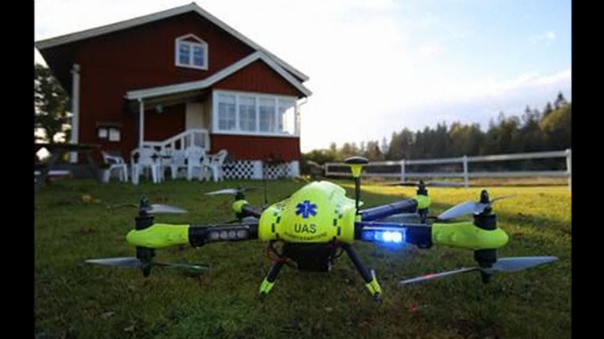
BRALANDA, Sweden (Reuters) — A drone which carries a defibrillator to help people suffering from a cardiac arrest is being developed at the Karolinska Institute in Sweden.
Paramedic and researcher Andreas Claesson said that every year about 5,000 people suffer from sudden cardiac arrest in Sweden and around 70 per cent of these attacks occur in rural areas.
Having to cover great distances, since most emergency medical services are located in towns, the ambulance response times in rural areas can be up to 25-30 minutes and the survival rate is almost zero per cent.
Claesson hopes a drone carrying a defibrillator will see the survival rate increase.
In an initial trial drones arrived at a destination four times quicker than ambulances.
If an AED is used within the first 3-5 minutes about 70 per cent can survive but the chance of survival decreases by about 7-10 per cent for each minute that passes and after 10-15 minutes the chance of survival is around 0-5 per cent.
Currently, ambulances, fire trucks and police cars have defibrillators but Claesson said a new method was needed and with drone technology developing rapidly, use of drones would increase.
At the moment, Claesson and his team are preparing a randomized clinical study which will be launched in the summer of 2018 when they will be dispatching a defibrillator via a drone to people in need in rural areas.
Preparing for the study, they are seeking permits to fly drones and developing the necessary technology.
“We need to be able to communicate with air traffic control, using transponders, we need a network were we can use video surveillance during flight and most important during landing. So perhaps a bit more better power as well to reach further away,” he said.
Claesson said the main problem was that drone legislation was lagging behind, which means they are facing problems obtaining permits to fly and to communicate with aircraft.
Another potential problem that they need to examine is bystanders coming too close to the drone when it’s landing or their not knowing how to detach or use the defibrillator.
He said the study was the first of its kind in the world – proving and testing the technique – and he hoped that in the future drones would be an integral part in assisting people in medical emergencies.







